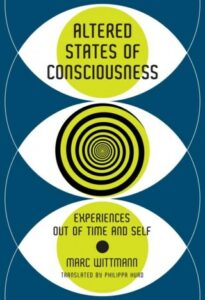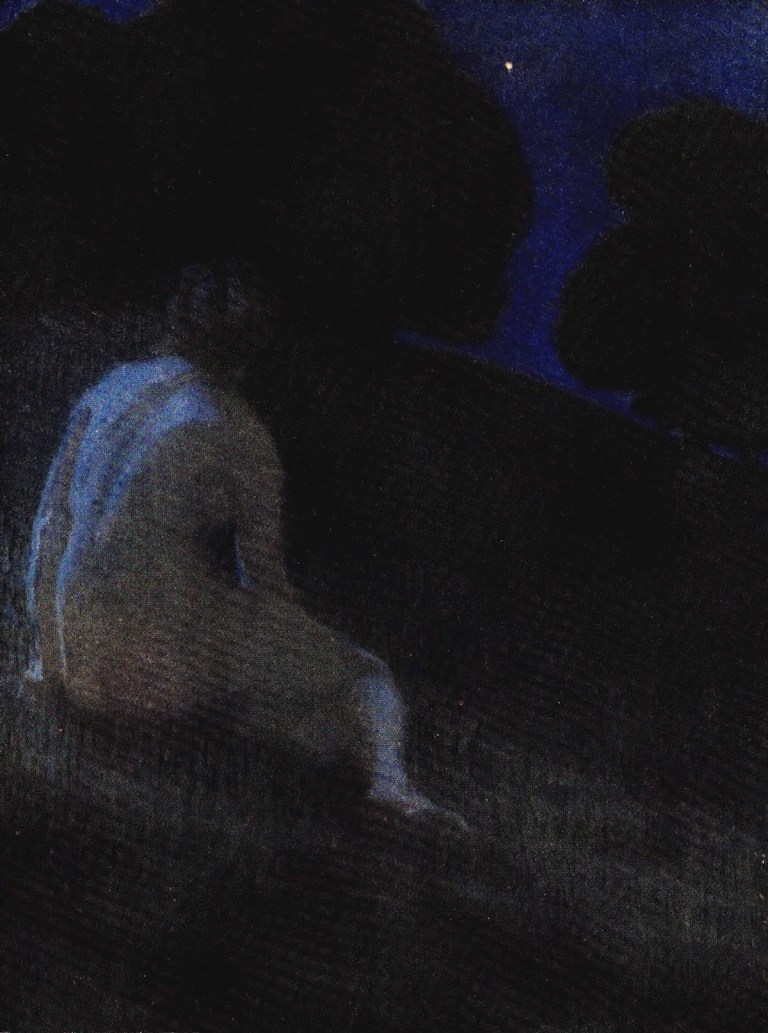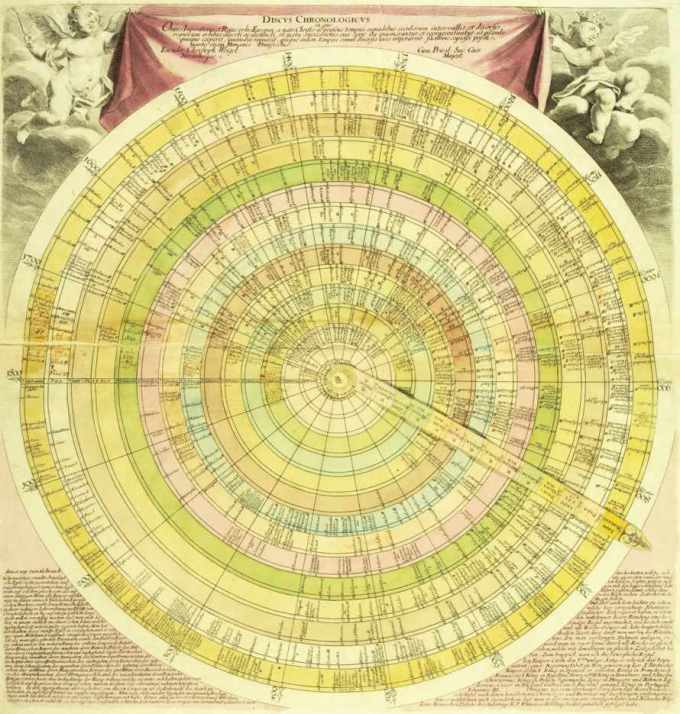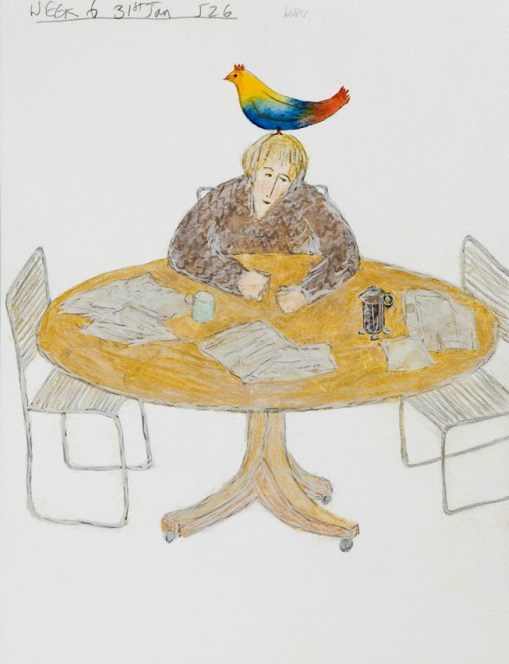Altered States of Consciousness: The Neuropsychology of How Time Perception Modulates Our Experience of Self, from Depression to Boredom to Creative Flow
INSPIRATIONAL, 26 Aug 2019
Maria Popova | Brain Pickings – TRANSCEND Media Service
“The brain does not simply represent the world in a disembodied way as an intellectual construct… Our mind is body-bound. We think, feel, and act with our body in the world. All experience is embedded in this body-related being-in-the-world.”
 “There is, in sanest hours, a consciousness, a thought that rises, independent, lifted out from all else, calm, like the stars, shining eternal. This is the thought of identity,” Walt Whitman wrote in contemplating the central paradox of the self. And yet the most paradoxical feature of consciousness might be precisely the elusiveness of the self in an identity composed of porous, ever-shifting multitudes. A century after Whitman, the Austrian poet, playwright, and novelist Thomas Bernhard addressed this in his exquisite meditation on the attendant paradox of self-observation: “If we observe ourselves, we are never observing ourselves but someone else. Thus we can never talk about self-observation, [for then] we are talking as someone we never are when we are not observing ourselves, and thus when we observe ourselves we are never observing the person we intended to observe but someone else.”
“There is, in sanest hours, a consciousness, a thought that rises, independent, lifted out from all else, calm, like the stars, shining eternal. This is the thought of identity,” Walt Whitman wrote in contemplating the central paradox of the self. And yet the most paradoxical feature of consciousness might be precisely the elusiveness of the self in an identity composed of porous, ever-shifting multitudes. A century after Whitman, the Austrian poet, playwright, and novelist Thomas Bernhard addressed this in his exquisite meditation on the attendant paradox of self-observation: “If we observe ourselves, we are never observing ourselves but someone else. Thus we can never talk about self-observation, [for then] we are talking as someone we never are when we are not observing ourselves, and thus when we observe ourselves we are never observing the person we intended to observe but someone else.”
Midway in time between Whitman and Bernhard, Virginia Woolf distilled the paradox into its central problem: “One can’t write directly about the soul. Looked at, it vanishes.” Far ahead of modern science, she understood that our experience of selfhood and the “soul” is largely rooted in our experience of time — that self and time are entwined in a shared elasticity.
Nearly a century after Woolf and many turns of the cultural wheel after Whitman, the German psychologist and chronobiologist Marc Wittmann — a pioneer in the research on time perception — takes up these enormous, elemental questions in Altered States of Consciousness: Experiences Out of Time and Self (public library), translated by Philippa Hurd. Weaving together the phenomenology of perception, clinical research in psychiatry and neurobiology, patient case studies, philosophy, literature, and landmark experiments from psychology labs around the world, Wittmann examines the extremes of consciousness — near-death experiences, epilepsy, intensive meditation, psychedelics, mental illness — to shed light on the abiding enigmas of what consciousness actually is, how body, self, space, and time intertwine, where the boundaries of the self are located, why the dissolution of those boundaries might be the supreme wellspring of happiness, and how consciousness of time and consciousness of self co-create each other to construct our experience of who we are.
In a sentiment that calls to mind the closing verse of Ursula K. Le Guin’s splendid “Hymn to Time” — “Time is being and being / time, it is all one thing, / the shining, the seeing, / the dark abounding.” — Wittmann writes:
Altered states of consciousness very often go hand in hand with an altered perception of space and time… Ultimately our perception and our thoughts are organized in terms of space and time. Extraordinary states of consciousness must therefore also affect space and time.
In consonance with Borges’s timeless refutation of time — “Time is the substance I am made of. Time is a river which sweeps me along, but I am the river; it is a tiger which destroys me, but I am the tiger; it is a fire which consumes me, but I am the fire.” — Wittmann adds:
Subjective time and consciousness, felt time, and experience of self are closely related: I am my time; through my experience of self I reach a feeling of time. If we have a better understanding of the subjective experience of time, then important aspects of self-consciousness will also have been understood better.
[…]
In extraordinary states of consciousness — moments of shock, meditation, sudden mystical experiences, near-death experiences, under the influence of drugs — temporal consciousness is fundamentally altered. Hand in hand with this goes an altered consciousness of space and self. In these extreme circumstances, time and concepts of space and self are modulated together — intensified or weakened together. But in more ordinary situations, too, such as boredom, the experience of flow, and idleness, time and self are collectively altered.

“Thoughts, silent thoughts, of Time and Space and Death.”
Illustration by Margaret C. Cook from a 1913 edition of Walt Whitman’s Leaves of Grass.
Wittmann points to one fundamental difference between our sense of time and our other senses, which highlights the centrality of time perception to our experience of selfhood:
The sense of time is “embodied” in a more all-encompassing way than the other senses. Ultimately, time perception is not mediated by a specific sense organ, as happens in the case of the senses of sight, hearing, taste, smell, or touch. There is no sense organ for time. Subjective time as a sense of self is a physically and emotionally felt wholeness of our entire self through time.
And yet in his own research at UC San Diego, Wittmann located if not a separate sense organ, at least a particular brain region chiefly responsible for our sense of time. Using fMRI, he and his team furnished the first systematic empirical evidence that time perception is encoded in body signals governed by the insula — a fragment of the cerebral cortex folded deep within each lobe of the brain, already implicated by earlier research as a crucial locus of consciousness involved in emotion, self-awareness, and social interaction. With an eye to the delicate interleaving between our bodies and our minds, Wittmann writes:
The brain does not simply represent the world in a disembodied way as an intellectual construct, but rather the organism interacts as a whole with the environment… Our mind is body-bound. We think, feel, and act with our body in the world. All experience is embedded in this body-related being-in-the-world. Or, to put it another way, subjective experience means living that is embodied in the environment and social interaction with other people.
[…]
The bodily feelings that are linked to the insula — body temperature, pain, muscular contractions, physical contact, and signals from the gut — are also an integral component of emotions and trigger positive or negative feelings. Short-term affects as well as longer-lasting moods are essential for the modulation of the sense of time.
In fact, some of the most compelling evidence for the self as a temporal entity comes from the various experiments and case studies indicating that people with disrupted mental and mood states exhibit impaired time perception. Depression, which William Styron so memorably described as a “smothering confinement” in prolonged despair, dilates the perception of time to a tortuous degree. Citing a study in which patients hospitalized for depression demonstrated strong positive correlation between the severity of their symptoms and their inability to correctly estimate time, Wittmann writes:
People suffering from depression are temporally desynchronized; their internal speed does not match the speed of the social environment. Depressiveness and sadness, expressed in a negative self-image, self-blaming, and a feeling of worthlessness, among other things, go hand in hand with the intensified, unpleasant sensation of time passing more slowly.
In addiction, time becomes arrhythmic. When intoxicated by a stimulant, thoughts and actions speed up from their ordinary rate but the brain fails to encode these sped-up experiences as proper memories. During withdrawal, the opposite happens — time dilates and expands. Hyperfocus on the present craving for the drug makes the tortuous physical symptoms seem interminable and a dependency-free future seem infinitely distant. Wittmann sums up the cruel temporal trap of addiction:
In a state of addiction the individual loses his or her temporal freedom — the freedom to choose between present and future opportunities.
In schizophrenia, the temporal disruption is even more pronounced — the continuous unity as which the “self” is ordinarily experienced shatters into fragmentary moments that seem to freeze in time, preventing the person from integrating past, present, and future into a cohesive picture of being. Reflecting on patients’ consistent reports of time standing still, of all future perspective vanishing, and of feeling like they themselves are dissolving, Wittmann writes:
In schizophrenia, the continuity of temporal experience and with it the continuity of the self are disturbed. It is as if the “self” is stuck in the present. Time no longer moves on, and seems to stand still. Temporal standstill means the standstill of the subject. Normally we experience ourselves as a unity of our self. Our focus on anticipated events kick-starts our preparations for action. Mental presence means that we integrate past, present, and anticipated experience into a whole that is our self. As conscious beings we are constituted through self-experience in the three temporal modes… In schizophrenia… the dynamic of the passing of time, which underlies the subjectivity of all our experience, no longer functions. Because subjective time “gets stuck,” the experience of the self that depends on the underlying dynamic temporal structure is impaired. Without the dynamic of this temporal flow, the “self” collapses into fragments of now.
This interdependence between our sense of time and our sense of self plays out not only in mental states pathological in the clinical sense but also in our existential pathologies, as it were — our experiences of boredom, creative flow, and the fringes of wakefulness. Nearly a century after Bertrand Russell admonished that “a generation that cannot endure boredom will be a generation… in whom every vital impulse slowly withers, as though they were cut flowers in a vase,” Wittmann writes:
Boredom actually means that we find ourselves boring. It’s the intensive self-reference: we are bored with ourselves. We are tired of ourselves.
[…]
In boredom we are completely time and completely self — inner emptiness. Now I am I and nothing else — a surfeit of being oneself, in most cases when one is alone, but sometimes also being lonely when being with others.
If time unspools interminably in boredom, it races so rapidly as to vanish during creative flow. In such a state, one experiences the positive counterpart to the dissolution of the self schizophrenic patients report. Wittmann limns the experience:
On the one hand we have achieved something that will be permanent — writing this text, solving a syntax problem in programming — but our life as a whole has almost disappeared for minutes or even hours. We were concentrating fully and completely on the matter at hand, but in doing so we did not notice ourselves: a loss of the experience of both self and time. Expressing it negatively this way also shows how the perception of self and that of time are jointly modulated.
One of the starkest everyday confrontations with the disintegrating self comes in the moments when consciousness slips out if its diurnal robe and into the nocturnal. More than a century and a half after Nathaniel Hawthorne contemplated how the transcendent space between sleep and wakefulness illuminates temporality, Wittmann notes that these experiences reveal something beyond the standard model of memory and narrative as the building blocks of selfhood — emerging from this lacuna between sleep and wakefulness is also a sense of the self as “the mere feeling of being,” independent of autobiographical memory. He writes:
In the seconds of waking up, as the narrative self is not updating, consciousness is focused on something nevertheless: it is the physical self that is at the center of perception and thought, which enables the differentiation between the self and non-self. Under normal circumstances we are aware of our experiences, memories, and expectations, the objects of our consciousness. Below the surface, however, we also have a minimal self, the egocentric anchor of all experiences that in the above-mentioned situation of memoryless awakening is suddenly experienced very clearly, as the usual objects of our consciousness, perceptions, and memories are missing. I am thrown back upon myself.
In such a case the experience of self can be understood as an “ego-pole.” My “ego-subject” is focused on an “ego-object”: I perceive myself. However, there is a fundamental problem here, as the ego-object is categorically different from the ego-subject. If we observe ourselves self-referentially — that is, the ego-subject observes itself — it always observes itself as an ego-object.
[…]
In the transition from sleeping to waking we experience the boundaries of our usual state of self. Every time we wake we become conscious of our selves once again; we are inserted into our state of awakeness. But in isolated cases the process of becoming conscious does not happen seamlessly — the ego does not recognize itself. Through such moments we have the opportunity to investigate the enigma of consciousness, revealing how the conscious self depends on factors yet to be determined, which are constitutive of self-consciousness.
But nowhere do the boundaries of the self-in-time seem to dissolve more palpably than during psychedelic experiences. A century after the pioneering psychologist and philosopher William James first codified the typical features of transcendent states, Wittmann draws on the new generation of research into how the science of psychedelics illuminates consciousness and writes:
Scientific research on the effects of LSD and psilocybin has shown clearly that the states of consciousness involve striking changes in perception, emotions, and ideas, and also in the ways they are described: time, space, and the experience of self are dramatically altered. These changes are comparable only with other extreme states of consciousness such as occur in dreams, in mystical and religious ecstasy, or in acute psychotic phases in the early stage of schizophrenia. The dimensions of mystical experience include oneness of the self with the universe, the feeling of timelessness and spacelessness, the most intense feelings of happiness, and the certainty of experiencing a sacred truth which is, however, indescribable. The latter is the feeling of looking behind the veil of reality and seeing the immutable (that is, timeless and spaceless) truth of the world in its entirety.
[…]
Research into the mystical experience of the disintegration of time and the self under the influence of hallucinogens is a way toward understanding human consciousness.
In the remainder of the altogether fascinating Altered States of Consciousness, Wittmann goes on to examine how experiences like deep meditation and music shed light on the nature of consciousness through the lens of time and self. Complement it with Kierkegaard on bridging the ephemeral and the eternal and neuroscientist Christof Koch on how the qualia of our experience illuminate the central mystery of consciousness, then revisit Wittmann’s earlier exploration of how the interplay of spontaneity and self-control mediates our capacity for presence.
_______________________________________
 Brain Pickings is the brain child of Maria Popova, an interestingness hunter-gatherer and curious mind at large obsessed with combinatorial creativity who also writes for Wired UK and The Atlantic, among others, and is an MIT Futures of Entertainment Fellow. She has gotten occasional help from a handful of guest contributors. Email: brainpicker@brainpickings.org
Brain Pickings is the brain child of Maria Popova, an interestingness hunter-gatherer and curious mind at large obsessed with combinatorial creativity who also writes for Wired UK and The Atlantic, among others, and is an MIT Futures of Entertainment Fellow. She has gotten occasional help from a handful of guest contributors. Email: brainpicker@brainpickings.org
Go to Original – brainpickings.org
Tags: Consciousness, Inspirational, Maria Popova, Mental Health, Mind
DISCLAIMER: The statements, views and opinions expressed in pieces republished here are solely those of the authors and do not necessarily represent those of TMS. In accordance with title 17 U.S.C. section 107, this material is distributed without profit to those who have expressed a prior interest in receiving the included information for research and educational purposes. TMS has no affiliation whatsoever with the originator of this article nor is TMS endorsed or sponsored by the originator. “GO TO ORIGINAL” links are provided as a convenience to our readers and allow for verification of authenticity. However, as originating pages are often updated by their originating host sites, the versions posted may not match the versions our readers view when clicking the “GO TO ORIGINAL” links. This site contains copyrighted material the use of which has not always been specifically authorized by the copyright owner. We are making such material available in our efforts to advance understanding of environmental, political, human rights, economic, democracy, scientific, and social justice issues, etc. We believe this constitutes a ‘fair use’ of any such copyrighted material as provided for in section 107 of the US Copyright Law. In accordance with Title 17 U.S.C. Section 107, the material on this site is distributed without profit to those who have expressed a prior interest in receiving the included information for research and educational purposes. For more information go to: http://www.law.cornell.edu/uscode/17/107.shtml. If you wish to use copyrighted material from this site for purposes of your own that go beyond ‘fair use’, you must obtain permission from the copyright owner.

